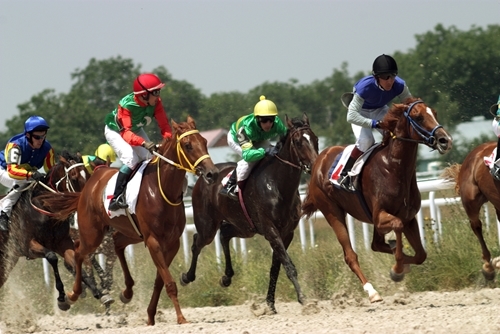Of the myriad of potential health problems facing horses, osteoarthritis is among the most severe. According to the University of Colorado’s College of Veterinary Medicine and Biomedical Sciences, this bone disease is the leading cause of lameness, in which horses experience difficulties in moving and functioning properly. Yet despite how damaging it can be, research on the origins and development of osteoarthritis is still ongoing. One college student, however, is doing her part with some cutting-edge new research. As part of her senior thesis, Ontario Veterinary College student Cristin McCarty analyzed osteoarthritis’ early stages with methods normally reserved for vehicle crash test simulations.The answer is in the joints
McCarty, who herself suffers from joint problems after years as a competitive rider and rower, teamed up with Dr. Jeff Thomason and Dr. Mark Hurtig from Ontario’s University of Guelph. Together, the trio sought to explore the overall joint load – the ratio of weight that the various joints bare – of horses running at high speed. Specifically, they focused on the cannon bone, which extends down from the knee, and the fetlock joint, which meets the cannon bone and runs down the ankle.
To get the best understanding of what stress these body parts experience, the collective used MRI images and CT scans to create finite-element (FE) modeling of horse skeletal structures. For years, car manufacturers have used FE almost exclusively, creating detailed vehicle models to test material integrity and general structural vulnerabilities.
Using the FE software within this context, however, the group was able to look at how the bones were affected by varying conditions, including rates of travel, overall direction and the magnitude generated by each stride. Using the subsequent data, they found exactly where stress is distributed across bones and where there are highest areas of remodeling – the formation of new, healthy bone – a tell-tale sign of osteoarthritis in both racing and some competitive horses.
Interpreting the data
Speaking with Horsetalk, McCarty said the biggest challenge was adapting the FE software to create such complex biological structures, a process which took much of the last two years. Yet she and her colleagues uncovered several vital pieces of data, including:
- During acceleration, as much as 2.5 times a horses’ entire body weight can be placed on a single limb. It’s this distribution that proves especially harmful.
- Where exactly a horse runs also has an effect. Harder surfaces – like those found in many synthetic racing tracks – can put a strain on the hoof, which in turn places pressure on joints and tendons.
- Trauma from racing can predispose a horse to injury, and enough injury can be a contributing factor to the onset of osteoarthritis.
McCarty is also hoping that this data will show the importance of improved training programs for horses.
“If you wanted to run a 200-meter sprint, you would not sit on a couch all day; get up to sprint 50 meters then return directly to the couch,” she told Horsetalk. “With no pre-conditioning of joints, this is asking for injury. So why would we ask a horse to stand in a stall all day and then take them out for a gallop?”
The importance of stronger bones
Just as much as proper training and rest are important to healthy bones, trainers and breeders can keep joints healthy with supplements. Feet First® promotes healthier hooves, which can contribute greatly to the joint loading process. Fluid Action® HA liquid and powder contain several ingredients shown to promote joint and bone health, including glucosamine, hyaluronic acid and MSM.








